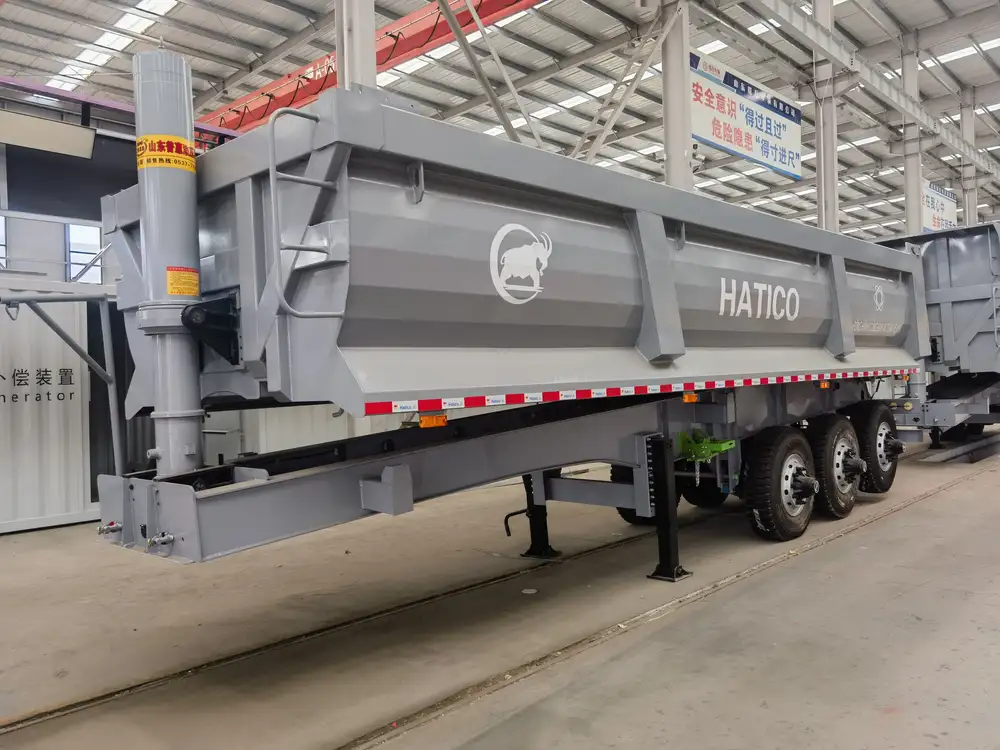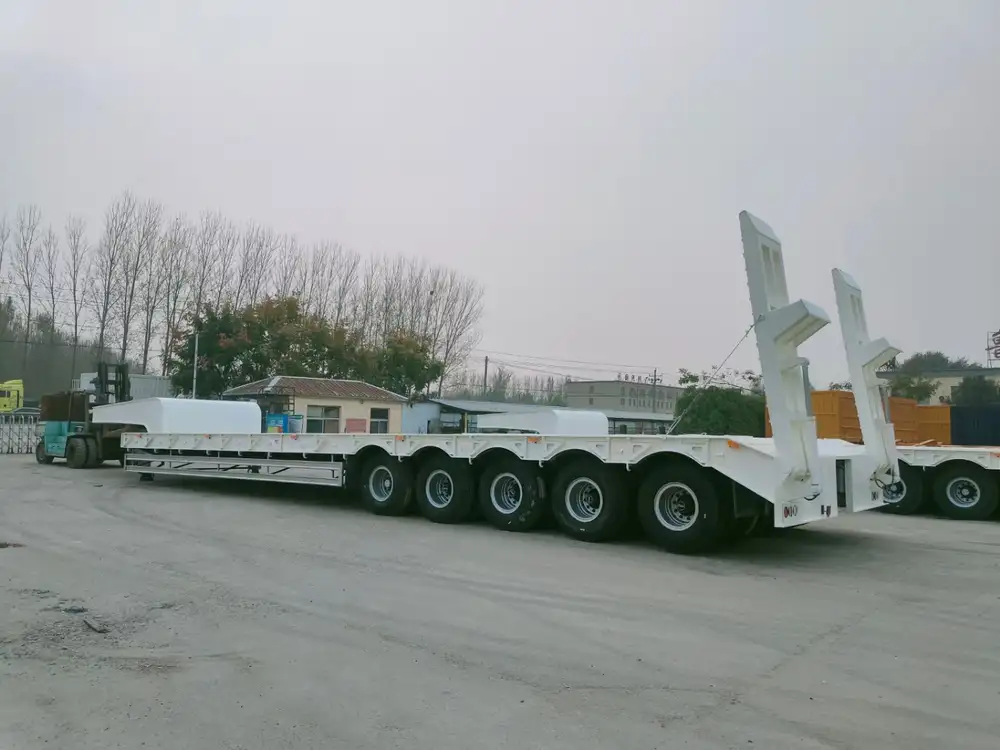Hauling a semi-trailer, especially one as substantial as a 57-foot model, presents numerous considerations for truck operators, fleet managers, and logistics coordinators. California, known for its intricate transportation laws and diverse geographical terrain, requires a thorough understanding of the regulations governing trailer lengths, weights, and overall safety. This article delves into the essential factors to consider when attempting to haul a 57 semi-trailer in California, ensuring compliance while maximizing operational efficiency.
Understanding California’s Semi-Trailer Regulations
When discussing the legality of hauling a 57-foot semi-trailer in California, several critical regulations and standards come into play. California’s Department of Transportation (Caltrans) provides clear guidelines regarding vehicle dimensions to maintain safety on the roadways.
Maximum Vehicle Dimensions
The state of California imposes strict limitations on overall vehicle sizes, including:
| Type of Vehicle | Maximum Length | Maximum Width | Maximum Height |
|---|---|---|---|
| Standard semi-trailer | 53 feet | 8.5 feet | 14 feet |
| Long combination vehicle | 65 feet (includes truck and trailer) | 8.5 feet | 14 feet |
For a 57-foot semi-trailer, compliance hinges on evaluating both federal and state specifications. While federal guidelines generally allow for a maximum trailer length of 53 feet, California permits some exceptions under specific conditions, particularly for specialized loads and truck configurations.

Special Permit Requirements
To legally operate a 57-foot semi-trailer, operators must procure special permits. Depending on the specific attributes of the load being transported, the following permits might be required:
- Special Hauling Permit: Required for oversized loads beyond standard length limitations.
- Annual Permits: These allow for repeated travel on specific routes with non-standard length trailers.
- Single Trip Permits: Ideal for one-time hauls exceeding the state limits.
It is essential to consult the Caltrans website or local transport authorities to fully understand which permits are applicable and the process to secure them.
Considerations for Hauling a 57 Semi-Trailer in California
1. Route Planning and Restrictions
One of the most pivotal aspects of successfully hauling oversized trailers involves meticulous route planning. California is home to numerous weight-restricted bridges, narrow roads, and areas with specific height restrictions. Understanding these nuances can prevent delays and potential damage.
- Consult Caltrans: Their comprehensive resources detail routes suitable for oversized vehicles.
- Utilize GPS and Mapping Tools: Employing technology allows for real-time navigation that adheres to regulations.

2. Weight Limitations
Weight restrictions vary for different roads and bridge types in California. The allowable gross vehicle weight tends to hover around 80,000 pounds for trucks on highways, but certain roads may impose stricter limits.
| Type of Load | Maximum Weight Allowed |
|---|---|
| Standard Truck & Trailer | 80,000 lbs |
| Specific Allowed Axle Configuration | 20,000 lbs per axle |
3. Insurance and Liability
When managing a fleet or operating as an independent driver, ensuring adequate insurance coverage is paramount. This should encompass:
- Liability Coverage: Protects against third-party claims during transport.
- Cargo Coverage: Safeguards the load being carried in the event of loss or damage.
- Physical Damage Coverage: Necessary for the vehicle and trailers being utilized.
4. Safety Regulations
Safety regulations are tightened when dealing with oversized loads. Operators should adhere to these enhanced protocols:
- Use a Flagging Team: For particularly large loads, having escorts in lead and follow vehicles can elevate safety.
- Proper Signage: Displaying “Oversized Load” banners and utilizing appropriate lighting signals ensures visibility and safety.
- Adhere to Roadtime Limitations: Often, travel is restricted to daylight hours to reduce accident risks.

The Impact of California’s Terrain on Hauling Semi-Trailers
California’s diverse landscape presents unique challenges and opportunities when transporting massive trailers. Hauling in mountainous regions, desert areas, and urban environments necessitates specialized tactics.
Navigating Mountainous Areas
When traversing through Sierra Nevada or the San Gabriel Mountains, maintaining control while ascending or descending steep grades is critical.
- Employ Engine Braking: Using engine braking can help regulate speed downhill, reducing reliance on brakes.
- Gear Selection: Ensure appropriate ratios are selected when climbing, as this will help maintain momentum without overstraining the engine.
Urban Transport Considerations
In metropolitan hubs like Los Angeles or San Francisco, operators must consider:
- Traffic Congestion: Heavy traffic necessitates additional time for maneuvering.
- Tight Turns and Side Streets: Familiarize with the terrain to identify feasible routes that accommodate a longer trailer.

Loading and Unloading Practices for a 57 Semi-Trailer
Effective loading and unloading practices not only streamline the operation but also uphold safety standards.
Balanced Load Distribution
Ensuring that the load is evenly distributed contributes to vehicle stability during transit. Adhere to the following guidelines:
- Center of Gravity: Position heavier cargo towards the trailer’s center.
- Weight Check: Utilize weigh stations to confirm compliance with weight regulations post-loading.
Unloading Strategies
When unloading, employing systematic procedures ensures efficiency and safety:
- Secure the Trailer: Engage the parking brakes to prevent movement.
- Pre-Inspect the Area: A clear environment promotes safe unloading practices.
- Use Appropriate Equipment: Forklifts or unloading ramps may be necessary depending on the cargo type.

Maintenance and Inspections
Routine vehicle maintenance is non-negotiable for the safe operation of semi-trailers. This practice is essential for several reasons:
- Prevent Mechanical Failures: Regular checks can prevent accidents associated with mechanical failures.
- Extend Trailer Life: Consistent maintenance prolongs the lifespan of the trailer and its components.
Key Maintenance Practices
| Maintenance Task | Frequency |
|---|---|
| Visual Inspections | Daily before trips |
| Tire Checks | Monthly |
| Brake System Inspection | After every major haul |
| Lighting and Electrical Check | Before travels |
Conclusion
Hauling a 57 semi-trailer in California is a complex yet achievable task with the right knowledge and preparation. By understanding the state’s regulations surrounding dimensions, obtaining the necessary permits, planning routes judiciously, and adhering to strict safety protocols, operators can ensure smooth and compliant operations. Additionally, a focus on maintenance, efficient loading practices, and navigating California’s unique terrain illustrate a commitment to safety and regulatory compliance.
In this pursuit, always remain vigilant of changing regulations or road conditions that might arise, safeguarding both the investment in the trailer and the safety of all road users. Equipped with this comprehensive toolkit of knowledge and best practices, the challenge of hauling a 57-foot semi-trailer in California transforms from a daunting task into a manageable and rewarding venture.



